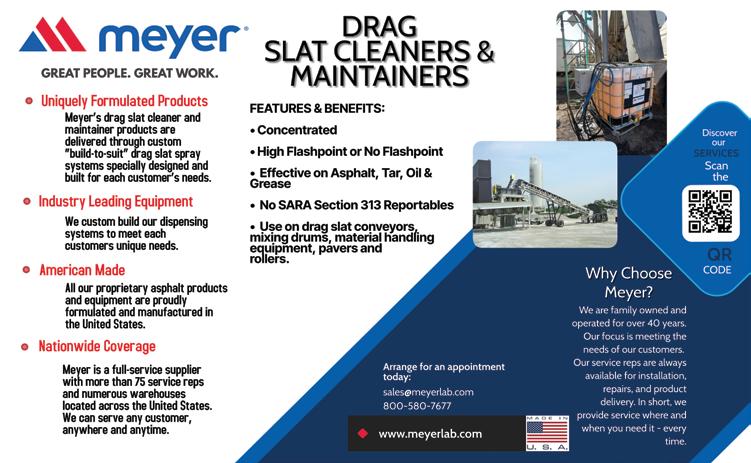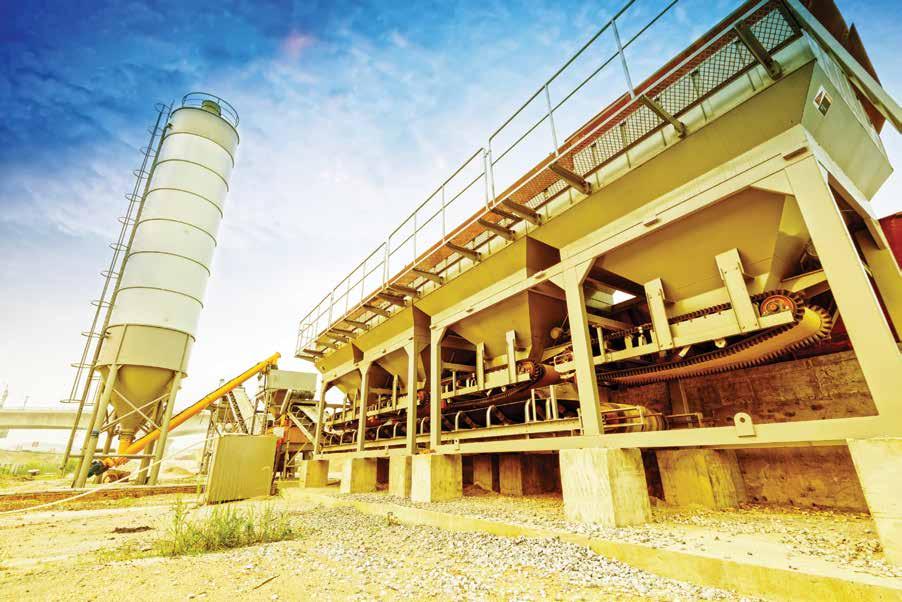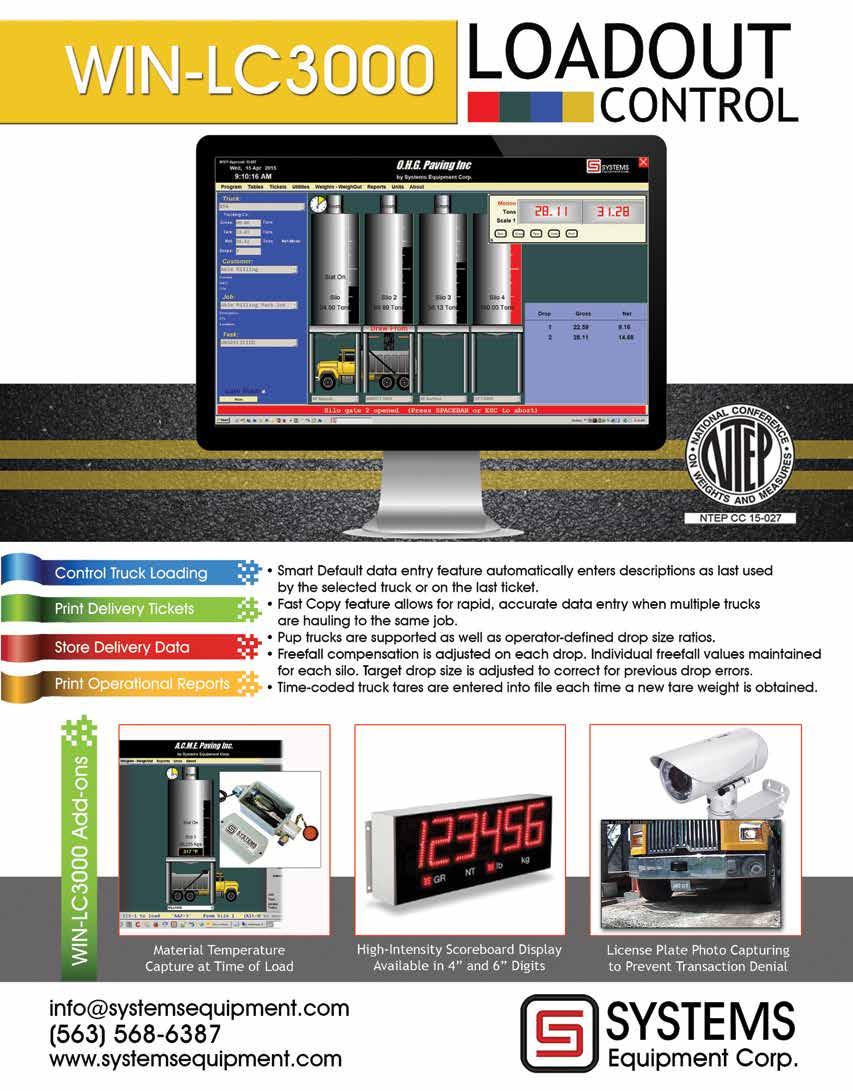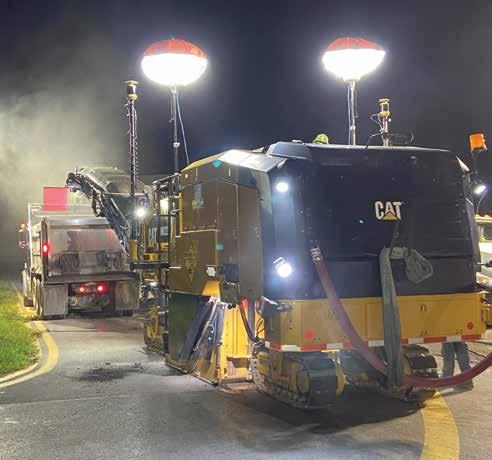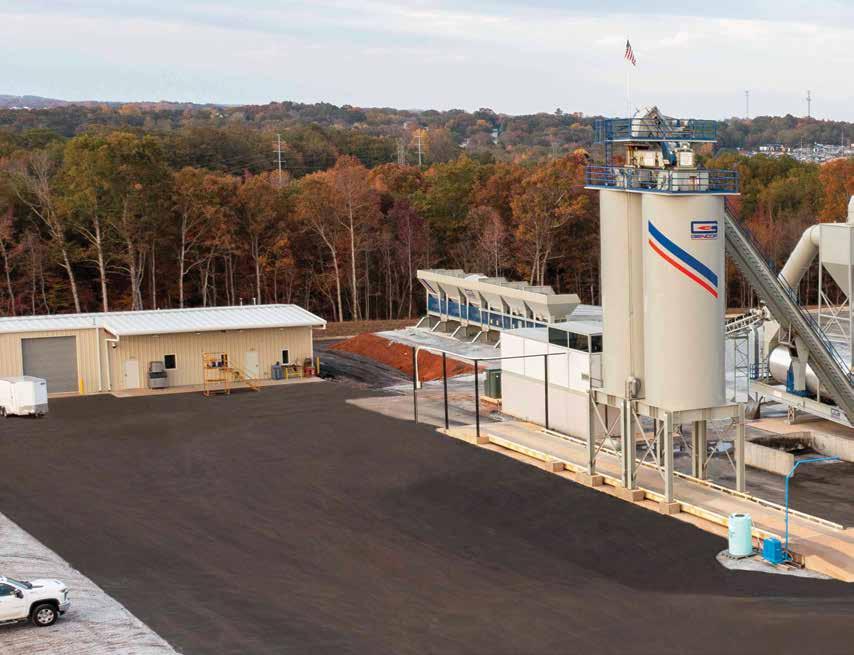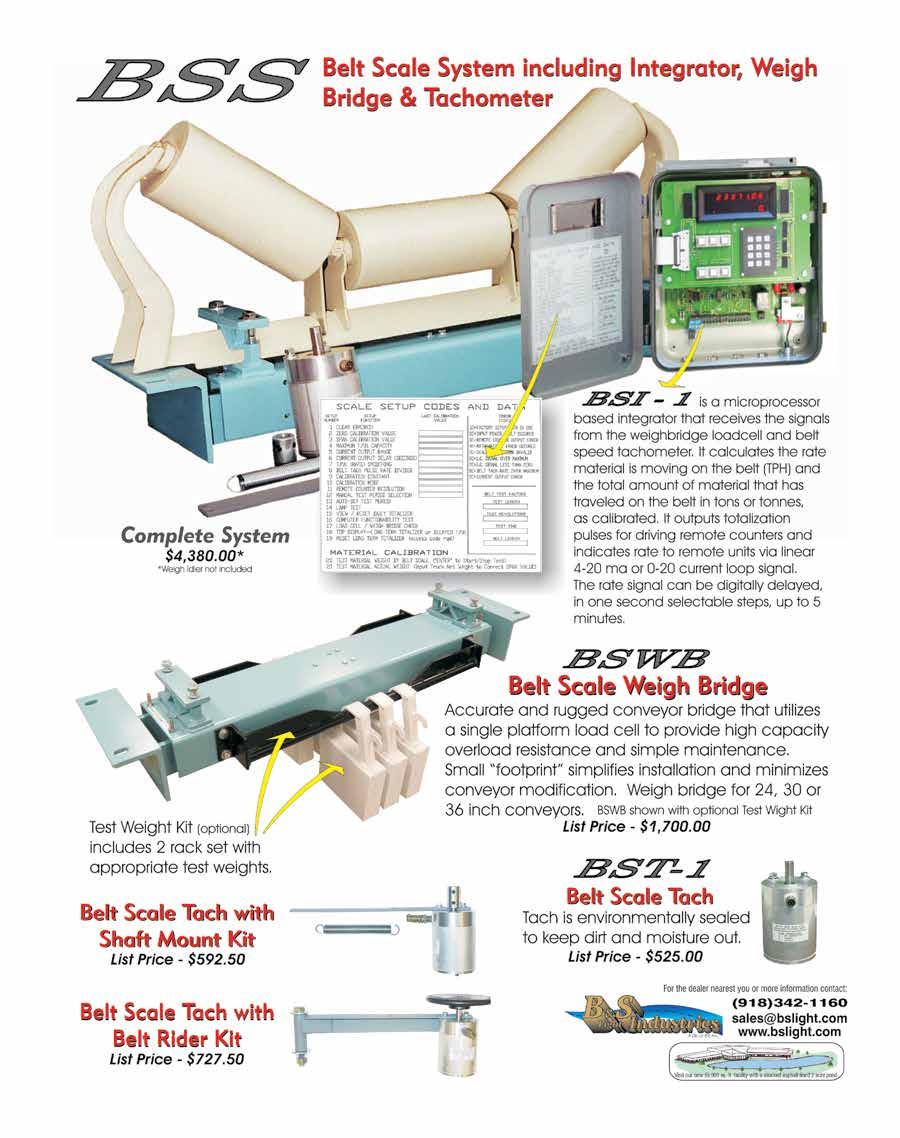
6 minute read
How to Handle Asphalt Burns
BY ASPHALTPRO STAFF
No matter how many hours of safety training the asphalt tank farm manager, sealcoat laborer, or other paving professional undergoes, accidents can happen in an industry where materials are stored and applied at high temperatures.
Rick Stone, the business development manager for Maxwell Products Inc. has been in the pavement maintenance market for over four decades and has found evidence that most asphalt burns happen to workers who have less than a year of experience or more than 10 years of experience. The first category of worker is new to the job and prone to mistakes. The second category of worker grows complacent in the day-to-day routine. While the industry can learn from these statistics and beef up safety training for all, we can also look at what to do when someone is burned by hot material.
How To Avoid The Burn
First and foremost, recognize that hotmix asphalt (HMA) is just that—hot. That sounds simplistic but it’s easy to become complacent when you work with the material day in and day out.
Workers coming into the industry must be told what temperatures and materials they’re working with. You can’t expect that they’re reading the safety data sheets pinned to the bulletin board where they clock in or in the break room. They must be told that hot liquid asphalt cement (AC) has the potential to explode when other substances are introduced to it. If you stop and think about it, we foam liquid asphalt with water to create specific pavement mixes, but we do this in a controlled manner within a contained apparatus. If you allow water to splash into heated asphalt, it could bubble up and explode to dangerous effect.
Teach this to new workers; remind veteran workers.
In its “Asphalt Worker Safety” series of safety manuals, the Occupational Safety and Health Administration (OSHA), spells out a number of back to basics, common sense practices for avoiding burns during asphalt work. What we have to remember is these are only “back to basics” for veterans of the industry. It’s all new to a worker who’s nev- er been introduced to something that has a flashpoint above water’s boiling point.
The personal protective equipment (PPE)—such as thermally insulated safety gloves and a plexiglass face shield—you give the new worker represents common-sense protective measures against burns but feels foreign to him at first. He needs to hear; these gloves keep 300-degree liquid from burning your hands and harsh solvents from soaking into your skin. This face shield keeps 300-degree asphalt from splashing onto your face, sticking there, and scarring you for life.
Six Safety Minimums
• Avoid splashing water or other additives into heated asphalt.
• Avoid smoking near asphaltic materials or additives.
• Avoid inhaling hot fumes.
• Always wear thermally insulated safety gloves.
• Always wear long sleeves and long pants.
• Always wear safety glasses; add a face shield to that in the lab.
How To Treat The Burn
Once an accident happens, you must take fast action. We’re not talking about reacting to an explosion. We’re talking about a burn on the skin. If what you have is a 375-degree drop of sealer the size of a dime that has dripped onto your hand or forearm, “it’s still going to hurt like hell,” Stone said. But that single drip is not necessarily going to stop production.
Paving Consultant John Ball has seen workers get a splash of hot tack on their wrist or hand and the steps to help them are immediate. He said, “We shove their arm in the ice container right off to kill the pain.”
If the area was small enough, those workers wrapped the wound in gauze—which OSHA does not recommend—and went back to work the rest of the shift. For more severe burns or those that cover more area, the worker needs to be treated in an emergency room. Ball recommended the crew have a discussion during the pre-construction meeting that includes:
• What is the closest hospital?
• What’s that hospital’s phone number?
• Who is the designated driver in the event of an emergency?
• Where is this information written on the day’s job report?
N.B. West’s Steve Jackson reminded readers that you need to include the site’s emergency address. For example, the address you give to the haul truck driver to come pick up mix may not be the address emergency personnel would use to find your team if a worker is down with a chemical burn. Know what address you are to give to the 911 dispatcher whether you’re out on a highway project, at a commercial lot, or at the asphalt plant.
At the paving site, each morning’s toolbox talk should include a “this is where we are today” moment when the foreman points out the cross streets or nearest mile marker. Have workers repeat the name of the street or the mile marker so you know they can say it to a dispatcher on a 911 call. Few dispatchers will be able to direct emergency responders efficiently to “the back of the tack truck in that work zone out on I-95.” Do all EMTs know what a tack truck looks like? Maybe not. It’s best if your personnel can say, clearly, “We’re at mile marker 79 Southbound on I-95.”
Don’t forget that an emergency will put the human mind and body into fight/flight/ freeze/focus mode. That means the members of the crew witnessing a colleague screaming in pain may not react as they are supposed to. Even though they know they need to plunge the injured person’s arm into a bucket of ice water and call the emergency number

Safety Spotlight
for help, their prefrontal cortex has transferred “action” to the lizard brain. When this happens, you want their instinct to be the right actions. You want them to be so well trained in the right steps to take that they have no choice but to help their co-worker properly. That means you need to practice emergency safety training.
Ball suggested practicing to help a burned co-worker during a rainy day, at the tailgate talk, or during annual safety day seminars. Or at all three. By practicing what to do in the event of an emergency, your team is more likely to respond to the emergency properly.
Check out the poster from Asphalt Institute—available for purchase through the National Asphalt Pavement Assocation (NAPA) online store—titled: “First Aid for Asphalt Burns Poster.” The NAPA store also features “First Aid for Asphalt Burns Wallet Cards.” Both of these properties have an area where the purchaser (you) writes in the appropriate emergency number in your immediate region/county to call for help. Both of these properties stress the importance of immediate cooling care for the burn victim at the scene, but address the need to ensure the victim is breathing clearly.
Step 1. Immediately assess the victim’s breathing and circulation.
Step 2. Immediately begin the cooling process. Run cool water over the affected area. If water isn’t immediately available, you “can” place an ice pack or a cold pack on the area while someone brings water to the site.
Step 3. Let others know what’s happening. Get help. Don’t try to do this alone.
Step 4. Call for emergency help, whether that’s 911 or the local emergency number. Notice these steps do not include covering the affected area with gauze or a bandage or any other wrapping. All current sources indicate you must leave the burn uncovered. Get the victim to help instead. Notice these steps do not include trying to remove the asphalt from the skin. All sources indicate this step is for medical personnel in an emergency room or other medical setting to undertake; even those sources are divided on best substances for asphalt removal from skin to prevent irritation, infection and potential poisoning from the substance being used. Let a medical professional handle that task. Get the victim to help instead.
Reminder from Robert Redford
While smoking cigarettes has its own health risks, doing so near asphalt or flammable additives can cause an explosion. You might not see vapors, but they could be around the ember of your cigarette, about to catch fire.
Members of this audience might be familiar with the 1975 Robert Redford movie “The Great Waldo Pepper,” in which a World War I non-fighter pilot sought fame and fortune on the state fair airshow circuit. In that film, one of Pepper’s fellow stunt pilots crashed in front of an excitable crowd of looky-loos who rushed onto the scene with their cigarettes hanging from their lips and fingers. Of course, their ashes caught the leaking fuel vapors afire, and Pepper’s friend died a horrible death
Let that scene burn into your memory and the next time you need a smoke break, take that break far from the asphalt action.
In fact, if the victim wears contact lenses and has liquid AC in his eyes, it is recommended that trained emergency personnel be the ones to remove the lenses. You will flush the eyes with cool water for at least 20 minutes, but a trained medical professional should handle the difficult task of saving the victim’s sight.
Common sense dictates burns that incorporate the eyes, face or other sensitive area will require more immediate emergency care than a burn to an arm or leg, but all burns should be treated with immediate, cooling care. But the best way to treat an asphalt burn is to avoid it. Train your workers how to respond to an accident, but above all, train them how to avoid the accident in the first place. Show them how and why to use PPE and how to be safe around hot materials.


